Diversity and inclusion
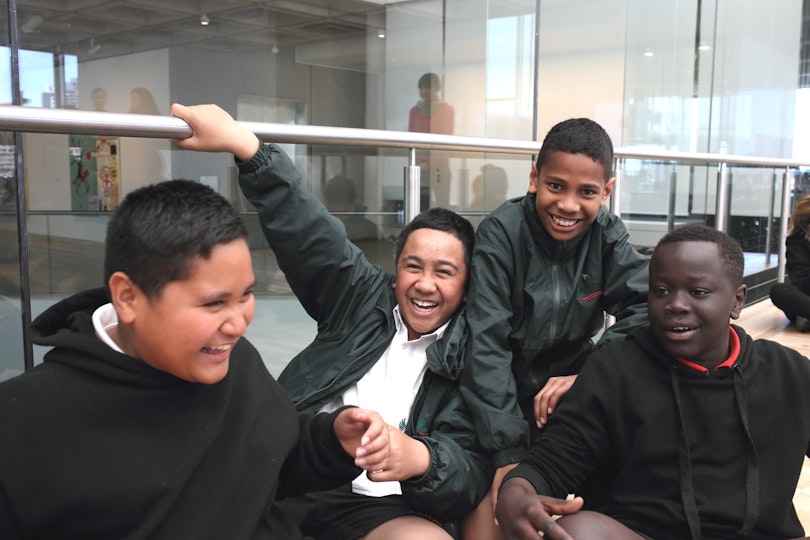
Students from Eagle Vale High School participating in Art Pathways at the Art Gallery
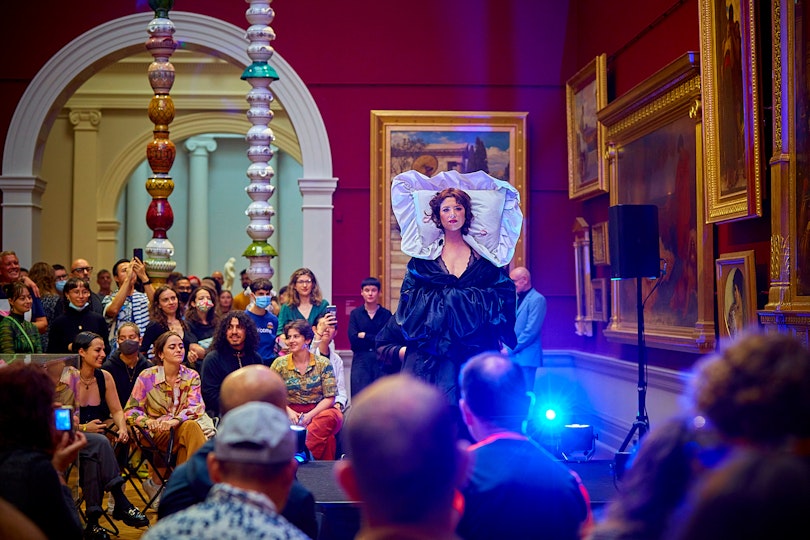
Micha Couell performing Eager and unashamed by Sidney McMahon at Queer Art After Hours 2022 at the Art Gallery
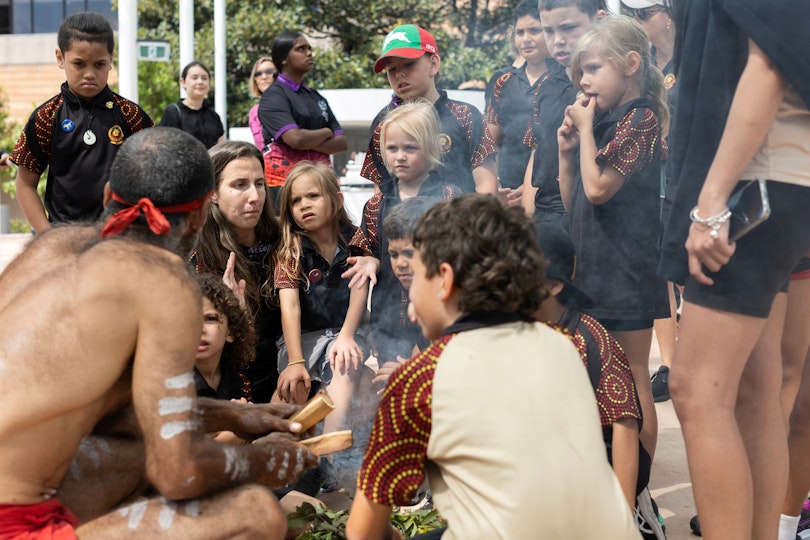
Students at the Art Gallery during the schools preview day of the new building
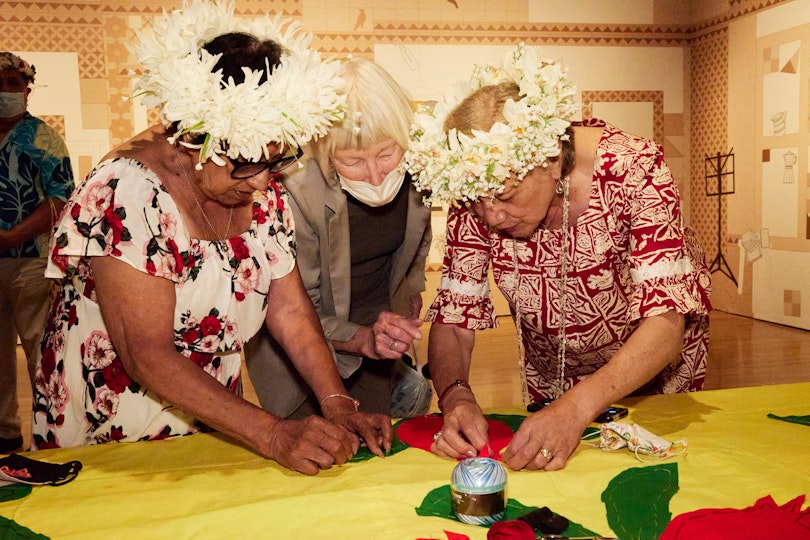
Members of the Cook Island community working on tivaevae during a drop-in demonstration for Matisse Alive
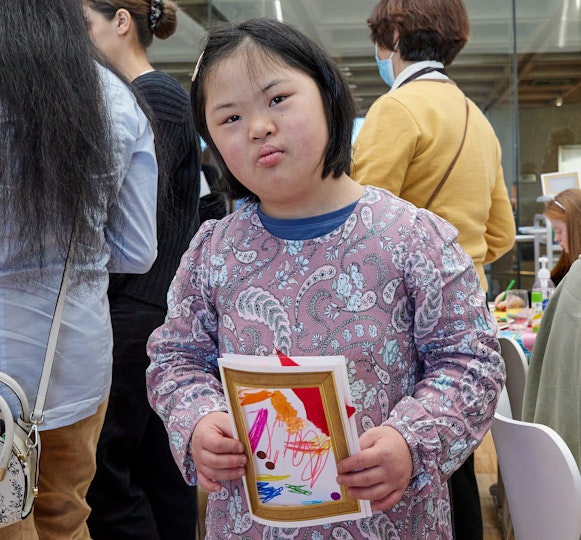
A participant in a Down Syndrome NSW community engagement afternoon at the Art Gallery
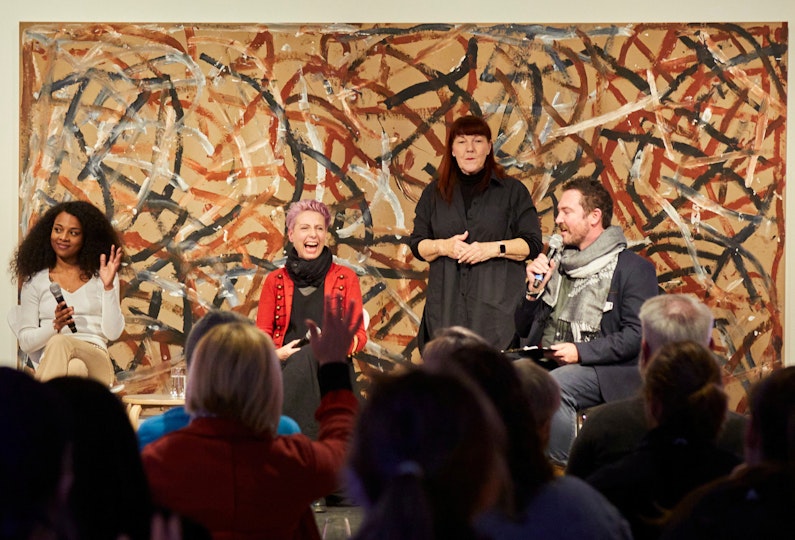
A talk at Art After Hours for the Archibald Prize 2022, featuring (from left to right, seated) Kathrin Longhurst, Midori Goto and Angie Goto in conversation with Liam Benson, with Auslan interpretation by Kathy Wright
The Art Gallery of New South Wales promotes and supports a diverse arts and cultural sector, in which creativity and innovation is nurtured by diversity in experiences of people and of communities. In this context, we have a responsibility to provide a vibrant civic space that empowers diverse voices and views.
Our Diversity and Inclusion Strategic Framework 2022–25 articulates our commitment to diversity, and to building inclusion with the diverse communities that we serve. It communicates our commitment to supporting a diverse workplace, which in turn shapes a positive work environment that attracts diverse talent.
What do we mean by diversity and inclusion?
Diversity refers to the many differences among us – seen and unseen. This may include – but is not limited to – age, cultural background, disability, education, gender, language, profession and sexual orientation.
Inclusion is a living, learning culture where people feel safe, valued, connected and respected. It involves behavioural and structural elements at individual and institutional levels.
Diversity cannot thrive without inclusion, and inclusion lacks meaning without diversity.
Our strategic focus areas
As outlined in the framework, we will focus on three strategic areas.
1. Our people
Goal
To create and maintain a diverse and inclusive work environment that builds a sense of community within the organisation, where people feel physically, mentally and emotionally safe to be their authentic selves and where leaders are accountable for building and sustaining a diverse and inclusive workplace.
Strategy
Proactively grow and foster diverse and inclusive teams across the Art Gallery’s functions and levels, with a focus on equitable access to opportunities for people from under-represented backgrounds.
Equip leaders and all staff with the knowledge and confidence to engage with diversity and inclusion in a safe-to-learn environment and make it part of their ‘business as usual’.
Build skills for conscious inclusion at all levels, on a wide range of diversity dimensions and intersecting identities.
Create safe spaces for staff and volunteers to share concerns they feel and face, and bring these to the attention of leadership.
Listen and learn from each other to co-create responsive inclusion practices with a mindset of continuous learning.
Scope
This strategic area is internally focused on the Art Gallery as a workplace, including people at all levels of governance and operations – our Board of Trustees, directors, staff and volunteers.
Targets
By 2025 we will have:
diversity and inclusion embedded in our policies and processes, work practices and decision-making
our people feeling included, regardless of backgrounds, in internal and external staff surveys
our people, especially people leaders, trained and feeling confident to apply their knowledge and skills in diversity and inclusion
our workforce diversity meeting NSW Government targets
a participation rate of at least 90% in the collection of our people’s diversity data.
2. Our purpose
Goal
To be a 21st-century art museum and cultural institution that reflects, connects and contributes to the vibrancy of our wider community and society, through creative leadership that demonstrates and drives equity, accessibility and equality of opportunity in the arts and culture sector.
Strategy
Foster social cohesion and wellbeing through art and engagement programs.
Drive diversity in exhibitions, commissioning and collections in the Art Gallery and increase work with artists from diverse and under-represented backgrounds.
Engage with communities, especially from minority and under-represented backgrounds, in person and online, through partnerships with community institutions and groups, public programs and digital platforms.
Expand our relationship and our resonance with the wider community.
Scope
This strategic area is externally focused on the Art Gallery as a space for collecting, exhibiting, engaging with and enjoying art, and for art education and making, both with and for artists, audiences and the wider community.
Targets
By 2025 we will have:
increased representation and reflection of the diversity of the Australian community in our collections and exhibitions
increased engagement and partnerships with artists from under-represented backgrounds
increased diversity in visitor and audience participation in our services and programs
enhanced engagement mechanisms in place for artists, audiences and stakeholders to have a say in the Art Gallery
digital content that complies with legal requirements and meets best practice and standards to ensure accessibility for all.
3. Our place
Goal
To ensure that our expanded art museum campus on Gadigal Country, and the facilities, spaces and environments that we create within it, are safe, accessible and inclusive for all, in a way that is sustainable now and for the future.
Strategy
Provide an accessible and inclusive environment for artistic expression, visitor experience, workplace experience and community engagement.
Create culturally and psychologically safe spaces to learn from artists, arts workers, audiences and community members from diverse backgrounds.
Support front- and back-of-house teams to develop internal and public-facing programs, services and events that enliven the Art Gallery as a workplace, art museum and civic space.
Engage and empower diverse internal and external stakeholders in decision-making related to our Art Gallery campus and the inclusive ecosystem we create within it.
Scope
This strategic area bridges our internal and external presence and identity – as a workplace, an art museum and a civic space. It focuses on the land on which the Art Gallery campus stands – the lands of the Gadigal of the Eora Nation – as well as the ecosystem of inclusion in the spaces, facilities, programs, events and activities we create for staff, volunteers and visitors to our place.
Targets
By 2025, we will have:
increased levels of staff and stakeholder satisfaction with access and inclusion at our campus
co-created safe spaces and opportunities to learn from internal and external stakeholders from diverse and under-represented backgrounds
mechanisms in place to gather, analyse, measure and respond to internal and external feedback on our campus, services and programs
increased stakeholder diversity and engagement in the decision-making processes related to our campus, services and programs.
More information
For more information – including the director’s foreword to the plan; the Art Gallery’s mission, vision and strategic goals; case studies; the framework approach; the framework concepts; and key references – see the full Diversity and Inclusion Strategic Framework 2022–25 document.